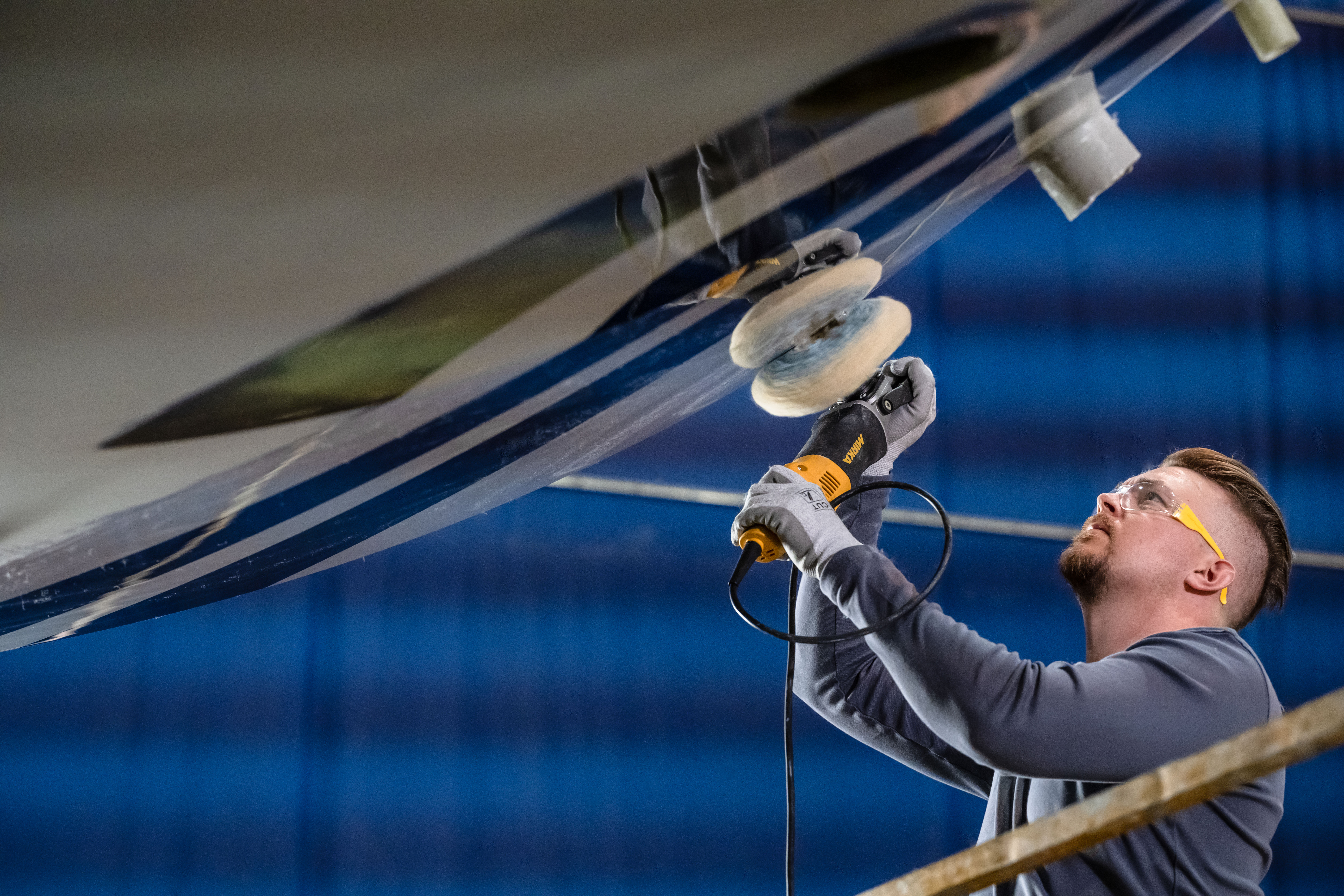2+1 years
Register Your Tool
All Mirka power tools have a standard two-year warranty. Get an additional 1 year of warranty free of charge by registering your tool within 30 days of purchase.
Keep your tools in excellent shape on myMirka where you can register, manage and order repair for your tools.
Replenish your stock, access marketing materials, view sales guides and read about upcoming product launches.
Plug preparation and sanding
With Mirka's solution, you can work on many different marine surfaces, for example when you want to level out an uneven polyurethan surface of a plug or prepare your plug by sanding polyester.
We recommend machine sanding with Mirka's Abranet® range, Galaxy, and Novastar discs. File boards (coarser grits) are recommended to shape the plug.
You can also use Abranet strips and hand sanding blocks together with a file board. Use the block with an interface pad for edge and contour sanding to keep the plug shape and avoid sanding thru coating.
Mould preparation and sanding process
When preparing to sand a mould gelcoat surface, start the sanding with Abranet or Iridium and coarser grits, to level the surface structure. You can use finer grits to prepare the surface for polishing. Both machine sanding or hand sanding is possible. To reduce scratch patterns, sand with finer grits and use Microstar. An interface can also be used when sanding to further reduce the scratch patterns. If required and you need to reduce scratch patterns even further sand with a hand-held sander and fine grits of Abralon J3, if necessary) After this, you can wipe and clean the surface with a Mirka microfibre cleaning cloth and then move on to the polishing.
Sand and polish safely without strain – Mirka's tools and abrasives are ergonomic and efficient
Improve the quality of work – The finish is excellent, with less effort
Water-based polishing compounds that are more effective, yet sustainable and user-friendly, combined with our tools and polishing pads you will get the perfect system for your surface
Please fill in this form, and we can find a solution.
Prepare for success – why surfaces matter when creating plugs and moulds
The plug is the start for creating moulds and requires a smooth and even surface. The plug is an exact replica of the object that you want to produce. One of the keys to success in mould construction is proper surface preparation of the plug. Any imperfections on the surface will be transferred to the mould, and then to future parts made from that mould.
There are two types of moulds, male and female. Male moulds are faster and cheaper to make. Each part produced will have a rough outer texture that will need more work on the finish. Female moulds are often more expensive, but they require less work on the finish because every part gets a smoother outer surface.
All polishes that Mirka produces are water-based. There are many benefits of choosing a water-based polishing compound.
“Solvent-based polishes may be effective in the short run, but they are more damaging and harmful, both for the user and the environment"
OK with Kim?
Do you get covered in dust when sanding? Save your lungs and your wallet by switching to dust-free sanding.
Mirka is a pioneer in dust-free sanding solutions. How is Mirka's dust removal so effective? Thanks to the multi-hole pad on the Mirka DEOS Delta sander and Mirka's original dust-free net abrasive Abranet.
When sanding without dust you get:
Nautor's Swan, Finland
Mirka products and solutions have an important role in reaching the desired quality and finish when it comes to building spectacular yachts. For Finnish yacht builder Nautor, a high-quality finish is about respecting the company’s roots and heritage, and it takes the best kind of power tools and abrasives to accomplish that. Benny Brännbacka from Nautor shares with us what it means to collaborate with Mirka, and how important client satisfaction is when building Nautor’s Swan yachts.
"Working with Mirka is very good, we are continuously collaborating."

